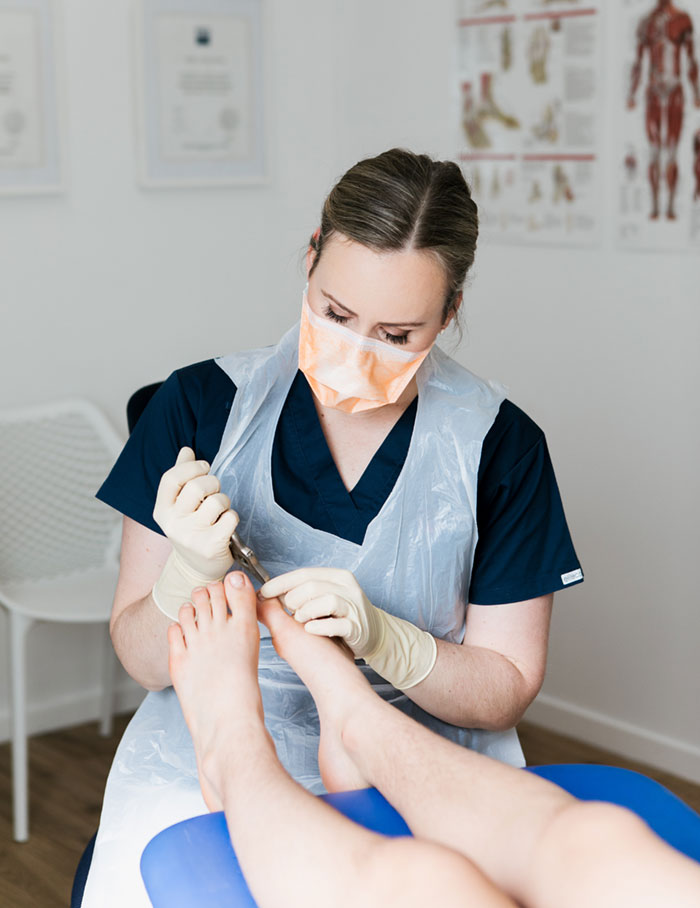INGROWN TOENAILS
What Are Ingrown Toenails?
Ingrown toenails happen when a nail’s edge curves and digs into the nearby skin, often on the big toe. This can cause irritation, swelling, and potential infection, particularly in damp, enclosed spaces like shoes that foster bacteria. Those with diabetes or circulation concerns may face added risks, but with prompt attention, we can help avoid complications.
Symptoms of Ingrown Toenails
You might notice tenderness or pain at the nail’s side, along with redness and puffiness. As it progresses, the area could feel warm, ooze fluid if infected, or make shoe-wearing uncomfortable. In advanced stages, it may lead to more serious concerns like deeper infections—we’re here to guide you through it compassionately.
Common Causes of Ingrown Toenails
Various everyday factors can lead to this condition. Here’s a quick overview:
- Incorrect Nail Cutting: Trimming nails too short or curving the edges promotes inward growth.
- Snug Footwear: Shoes that squeeze the toes, such as tight or pointed styles, push the nail into the skin.
- Foot Trauma: Injuries from sports, stubbing, or ongoing pressure can alter nail direction.
- Hereditary Traits: Some people inherit curved or thicker nails that are prone to ingrowing.
- Moisture and Hygiene Issues: Sweaty feet or poor drying after activities create an environment for problems, especially among teens and athletes.
Treatments for Ingrown Toenails
For mild cases, soothing soaks and opting for open-toed shoes may help but if symptoms linger or infection sets in, professional help is key.
At our Buderim clinic, we offer gentle procedures like nail elevation or partial removal with local anesthesia to resolve and prevent regrowth. We always review your health background, blood flow, and recovery potential first, tailoring care especially for those with diabetes or sports demands.

Toenail Surgery
Depending on the severity and recurrence of the ingrown toenail, surgery may be the recommended option for solving this problem.
Pain free partial nail removal is performed under a local anaesthetic in our Buderim clinic. This is an excellent way to remove the offending nail and cauterise the base so this portion doesn’t grow forward again.
Assessment of medical history, vascular status and healing capacity are undertaken prior to this procedure being under taken. It is recommended that you do not return to work or school on the same day of this procedure, however the next day is generally fine.
Toenail Surgery FAQs
- Yes you can go back to wearing enclosed footwear the next day after the procedure.
- Yes you need to go home an elevate your foot for 2 hours post procedure.
- Yes you need to keep the dressing dry for 24hours so best to have your shower prior to appointment
Prevention Tips for Ingrown Toenails
Stay ahead with easy routines: Cut nails straight across without shortening too much, choose shoes with ample toe space, maintain clean and dry feet, and skip restrictive socks.
Regular visits to us at Buderim Foot & Ankle, particularly for active folks or those with diabetes, can spot early signs. Let’s keep your feet happy and healthy together.
When to Seek Professional Help
Reach out if pain doesn’t improve, infection symptoms emerge, or you have underlying health conditions. Early care prevents escalation, and we’re here to support your journey to better foot health!
